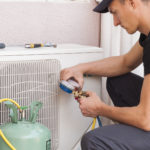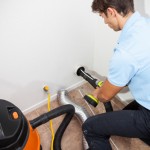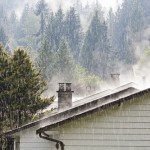 The first half of 2016 was the hottest six months on record since we began recording temperatures 137 years ago. With these record-breaking temperatures, it’s no surprise that building energy efficiency standards are being revised to mitigate global warming.
The first half of 2016 was the hottest six months on record since we began recording temperatures 137 years ago. With these record-breaking temperatures, it’s no surprise that building energy efficiency standards are being revised to mitigate global warming.
Anyone installing HVAC needs to familiarize themselves with standards, and right now this is especially true for commercial HVAC installers in the U.S.
Where do standards come from?
In the U.S., the standards for energy efficiency in buildings are developed by two organizations. The American Society of Heating, Refrigeration and Air Conditioning Engineers (ASHRAE) drafts the standards for all buildings except residential low-rise buildings. These are known as the 90.1 standards. The standards for residential low-rise buildings are laid out in the International Energy Conservation Code (IECC) put together by the International Code Council (ICC).
After new standards are released, the Department of Energy (DOE) then issues a formal determination. A determination is similar to a legal judgment. In this case the DOE evaluates whether the standards will result in national energy savings. Once the DOE issues a determination, all states are served notice to comply with the standards within two years.
The most recent commercial determination, issued in September 2014, found that ASHRAE 90.1-2013 standards would result in an 8.7% national energy cost savings. The residential determination issued last year found that the 2015 IECC standards would result in a national energy cost savings of 0.73%.
The deadline for complying with the ASHRAE 90.1-2013 standard is less than a month away. All states need to update their standards by September 26, 2016. If you have a building project on the go, you may want to check in with your local regulators prior to installing HVAC.
States have more time to prepare for low-rise residential standards. The deadline to comply with the IECC standards is June 12, 2017.
What are the standards for HVAC?
Standards vary from state to state, depending on the dominant weather conditions.
In northern states where heating is more important than cooling, the main requirement will be high efficiency furnaces with an Annual Fuel Utilization Efficiency (AFUE) of 90%. This means that 90% of the fuel in the furnace is converted to heat, with only 10% escaping.
Any furnace needs to draw in air but high efficiency ones have sealed combustion so they need to draw in fresh air from the outside. Airflow into and out of the system must be carefully maintained year round, and quality plastic vents can help with that process.
In southern states, where air-cooling is more important, the main requirement will be for air conditioners rated at a Seasonal Energy Efficiency Ratio (SEER) of 14. The SEER rating is a measure of the relative energy required for a specific cooling output.
Under the current U.S. standards, northern states will not have to worry about air conditioning regulations, and southern states can install furnaces with an AFUE of only 80%.
What about Canada?
In Canada energy efficiency regulations are set by Natural Resources Canada, and the standards vary based on the type of equipment. For example, oil-fired furnaces need to have a greater than 78% AFUE, and non-weatherized gas furnaces need a minimum of 90% AFUE.
Looking Forward
Standards will continue to evolve with ongoing improvements to energy efficiency. ASHRAE is currently working on standards for 2016 which have the goal of improving efficiency by 30-40% over 2004 standards. ASHRAE is giving away free design guides for improving energy efficiency by 30% or 50%.
The ICC releases new standards on a three-year cycle, so we’ll see a new set of residential standards in 2018. Canadian standards are also updated regularly.
Whether you are in the U.S. or in Canada, it’s a good idea to familiarize yourself with the standards that are currently in place as well as those coming down the pike. A thorough knowledge of the requirements for your region will help you make the best choices for building projects and your customers.



